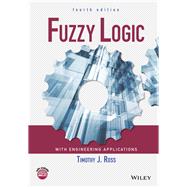Explore the diverse electrical engineering application of polymer composite materials with this in-depth collection edited by leaders in the field
Polymer Composites for Electrical Engineering delivers a comprehensive exploration of the fundamental principles, state-of-the-art research, and future challenges of polymer composites. Written from the perspective of electrical engineering applications, like electrical and thermal energy storage, high temperature applications, fire retardance, power cables, electric stress control, and others, the book covers all major application branches of these widely used materials.
Rather than focus on polymer composite materials themselves, the distinguished editors have chosen to collect contributions from industry leaders in the area of real and practical electrical engineering applications of polymer composites. The books relevance will only increase as advanced polymer composites receive more attention and interest in the area of advanced electronic devices and electric power equipment.
Unique amongst its peers, Polymer Composites for Electrical Engineering offers readers a collection of practical and insightful materials that will be of great interest to both academic and industrial audiences. Those resources include:
Perfect for postgraduate students and researchers working in the fields of electrical, electronic, and polymer engineering, Polymer Composites for Electrical Engineering will also earn a place in the libraries of those working in the areas of composite materials, energy science and technology, and nanotechnology.








